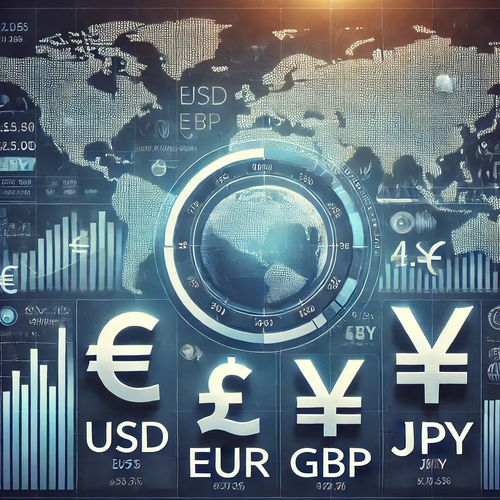

5 Key Strategies to Avoid Overspending on FX Exchange Rates
Updated Oct 28, 2024
Many companies on MoneyMade advertise with us. Opinions are our own, but compensation and in-depth research determine where and how companies may appear.
5 Key Strategies to Avoid Overspending on FX Exchange Rates
5 Key Strategies to Avoid Overspending on FX Exchange Rates
Forex exchange rates are sensitive towards important global economic and political events. When something unexpected happens, FX rates fluctuate so much that it can seriously damage investors, multinational corporations, traders, remote workers, travelers, and many more. To address these risks, experts have developed effective strategies that help companies and investors cut costs on FX exchange rates. Let’s overview the top 5 strategies employed by experts and list practical examples where famous investors and companies employed these methods successfully.
1. Hedging currency risks
1. Hedging currency risks
Hedging is one of the most popular methods to protect against currency fluctuations. This strategy is equally popular among investors, companies, and financial traders. Traders and investors with large trading positions use currency hedging strategies to mitigate short-term adverse movements.
It involves employing financial instruments like forward contracts, futures, or options to guarantee an exchange rate for a future transaction date.
It helps protect against unfavorable rate changes and gives firms and investors a more predictable cash flow. However, hedging is not for beginners and requires advanced trading skills. This is where FX trading for beginners comes in which also includes hedging as an important tool for risk management, together with other crucial methods, which is critical in financial investing.
Famous case
Apple is one of the expert users of currency hedging to manage global financial risk exposure. Since the brand operates and employs staff globally, it is constantly exposed to currency rate risks. In 2014, Apple hedged FX risks to mitigate strong dollar anticipation, which helped mitigate the negative impacts on earnings, as the dollar was eventually strengthened.
2. Multi-currency accounts
2. Multi-currency accounts
Multi-currency accounts are another effective method where companies and investors can hold, pay, and receive money in different currencies without the constant need to convert to a home currency. This method minimizes conversion fees while also allowing transactions in the local currency. Conversion fees apply when investors want to exchange one currency for another and can seriously impact spending when conducted on a larger scale.
Famous case
Airbnb is the most famous case of using multi-currency accounts effectively to minimize spending on FX exchange rates. Airbnb uses accounts in multiple currencies to manage payments across different markets. By maintaining local currency accounts, companies like Airbnb, which operates globally can conduct transactions at low cost with hosts.
3. Timing the exchange
3. Timing the exchange
Timing exchange rates is a method explored mainly by investors and traders. It involves monitoring currency trends and market conditions to identify the most favorable times to open FX positions. Traders and companies often monitor currency rates using advanced platforms with alerts to catch the best moments to execute translations and save money in fees. Traders are especially famous for using advanced indicators and alerts to time these exchange rates for optimal rates.
Famous case
George Soros is a renowned investor and Forex trader who “broke the Bank of England” in 1992 by shorting the British Pound. Soros and his Quantum Fund waited for the devaluation of the Pound due to serious macroeconomic difficulties and executed trades to profit from these challenges. This trade earned Soros over 1 billion dollars in a single day. George Soros is a perfect example of an experienced trader waiting for their best shot in the currency markets.
4. Negotiating with banks for better FX rates
4. Negotiating with banks for better FX rates
Many companies frequently negotiate with their banks to get the best available FX rates reducing costs considerably. This is especially true for companies that conduct large regular currency exchanges. Some companies even use third-party financial brokers to get better exchange rates when compared to banks.
Famous case
Amazon reportedly negotiates with brokers and banks to reduce FX costs. Amazon has large volumes of international payments and can settle better rates with banks and brokers. These negotiations help Amazon to save millions of dollars in currency exchange fees annually.
5. Fintech solutions for FX transactions
5. Fintech solutions for FX transactions
Fintech companies including TransferWise (now Wise), Revolut, and OFX offer B2B and retail clients competitive exchange rates and lower fees when compared to traditional banks. These apps also provide tools to automate the process of currency conversion and cross-border payments.
Famous case
Wise has gained a reputation for saving individuals and businesses serious amounts on FX transaction fees. Many small and medium-sized enterprises switched to Wise from banks to settle international payments, which enabled them to cut their FX exchange rate costs by a significant percentage.